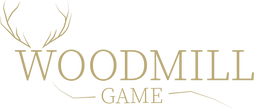Why Eat Wild
Meat That’s Ok To Eat
We like to think of our wild game as ‘Meat that’s ok to eat’. Nature rears our highland and lowland venison freely and sustainably without interference from modern farming factors, resulting in a wonderfully high protein, low fat, wholly natural food source that is a treat to eat.
In so many ways, Eating Wild addresses any concerns people may have about the ethics of eating meat - for whatever reason - and we can offer reassurance and evidence of wild being better for you, better for the animals, better for the rural economy and much, much better for the environment.
Better for You
Physically: Studies have shown that wild game meat is lower in fat and higher in protein than any other red meat, and farmed meat including farmed venison. While farmed meat has the fat inside, providing a marbled texture, wild has the fat outside providing a leaner cut and a purer flavour. This provides obvious health benefits in terms of diet and nutrition.
Peace of Mind: The way we run our supply chain means that we are in control of where all our meat comes from in Scotland. Because we’re hands-on the whole way through, we know and understand the animal’s habitat and where it came from, and how it has been handled through the transport and preparation process. This allows us to guarantee that your meat has been properly treated and is therefore of the best quality.
Safety: In the context of post-Brexit Britain, there are uncertainties around food sourcing and standards in other countries (notably the US), and the resources the UK will have in place to monitor and inspect food imports without the EU regulatory infrastructure. Buying wild Scottish game will be a safer way than ever to source your meat for its traceability benefits.

Better for the Environment
Natural Capital Ltd produced a report (2009) for Scottish Heritage on the life cycle assessment of Scottish wild venison, which was the first attempt at establishing a carbon footprint for wild deer in Scotland. The analysis indicated that the carbon footprint of venison was 38% lower than beef and 49% lower than lamb, largely due to the absence of highly intensive resource requirements of farming.
The land management involved in controlling deer numbers benefits the environment in a significant number of ways, all of which align with the SDG agenda to halt and reverse biodiversity loss in Scotland. These include helping delicate moorland ecosystems and woodland to recover by reducing grazing pressure; minimising trampling and compaction which dries out the soil and diminishes peat’s ability to absorb carbon and store greenhouse gases; and a reduction in methane production by deer (a 20% reduction in current deer numbers would save the equivalent of 15 million road miles).
Additionally, reduced deer numbers in turn reduces the number of road accidents and incidence of Lyme’s Disease (caught from deer ticks).
This harvestable surplus thus presents us with an ideal, legitimate and wholly sustainable food source that is directly beneficial to the environment.

Better for the Animal
Deer are wholly indigenous to Scotland and have been here since the Ice Age. Originally arriving from southern central Europe, man in fact followed deer here, seeing venison as the protein-rich food source it remains today.
After the departure of predators - lynx, bears and finally wolves - deer numbers were managed by the stalkers and gamekeepers of the large estate owners. However after the World Wars, death duties meant that the estates needed to focus on commercial stag shooting as a means of income, and culling of female deer (hinds), which offer less commercial benefit than trophy stags, was left unattended. In the absence of these breeding controls, deer numbers rose dramatically, by some 50% in the past five decades. This is why we have such high numbers of deer in Scotland, currently estimated to be around 360,000-400,000.
Such large populations need to be managed not only for environmental reasons, but also to the benefit of the animals themselves. Without controlled culling, many would die from starvation due to over-grazing and disease, so carefully planned programmes are in place help to ensure that healthy populations are maintained.
These plans are drawn up by professional Deer Management Groups working in conjunction with the Scottish Government. Deer Management is a specialist, skilled occupation requiring exceptional knowledge of land, nature and biodiversity, with decisions taken around a multitude of complex factors including weather, projected birth numbers and commercial demand for deer stalking. While our deer live completely wild and natural lives, behind the scenes they are being expertly and scientifically cared for.

Better for the rural economy
Deer stalkers are employed to control the numbers in order to minimise the damage caused by deer, which creates valued employment and income within the fragile economy of remote parts of Scotland. While the vast tracks of the Highlands appear to be rugged and completely wild, stalkers know every inch of the land and actively manage its wildlife and the growth habits of the vegetation.
From Woodmill we stalk on a number of Highland and Lowland estates for land owners, ensuring that the deer numbers are well balanced and not over-shot, and that the natural seasonality is respected. We take this role extremely seriously and Steven Wade sits on a number of professional Deer Management groups, and runs training courses and apprenticeships for those wishing to become involved in the deer stalking world.
